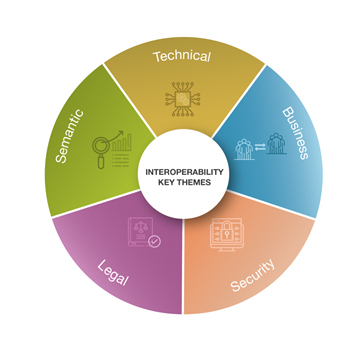Interoperability is built around the five key themes of business, security, legal, semantic and technical.
Building interoperability needs technical solutions, but your agency's success and level of maturity will vary according to how well business, security, legal and semantic considerations have been implemented.
The key themes address the complex nature of creating and maintaining interoperable information, systems and processes.
Your information governance committee or equivalent can help you coordinate initiatives across the themes by implementing information and data governance mechanisms such as frameworks, policies and standards.


